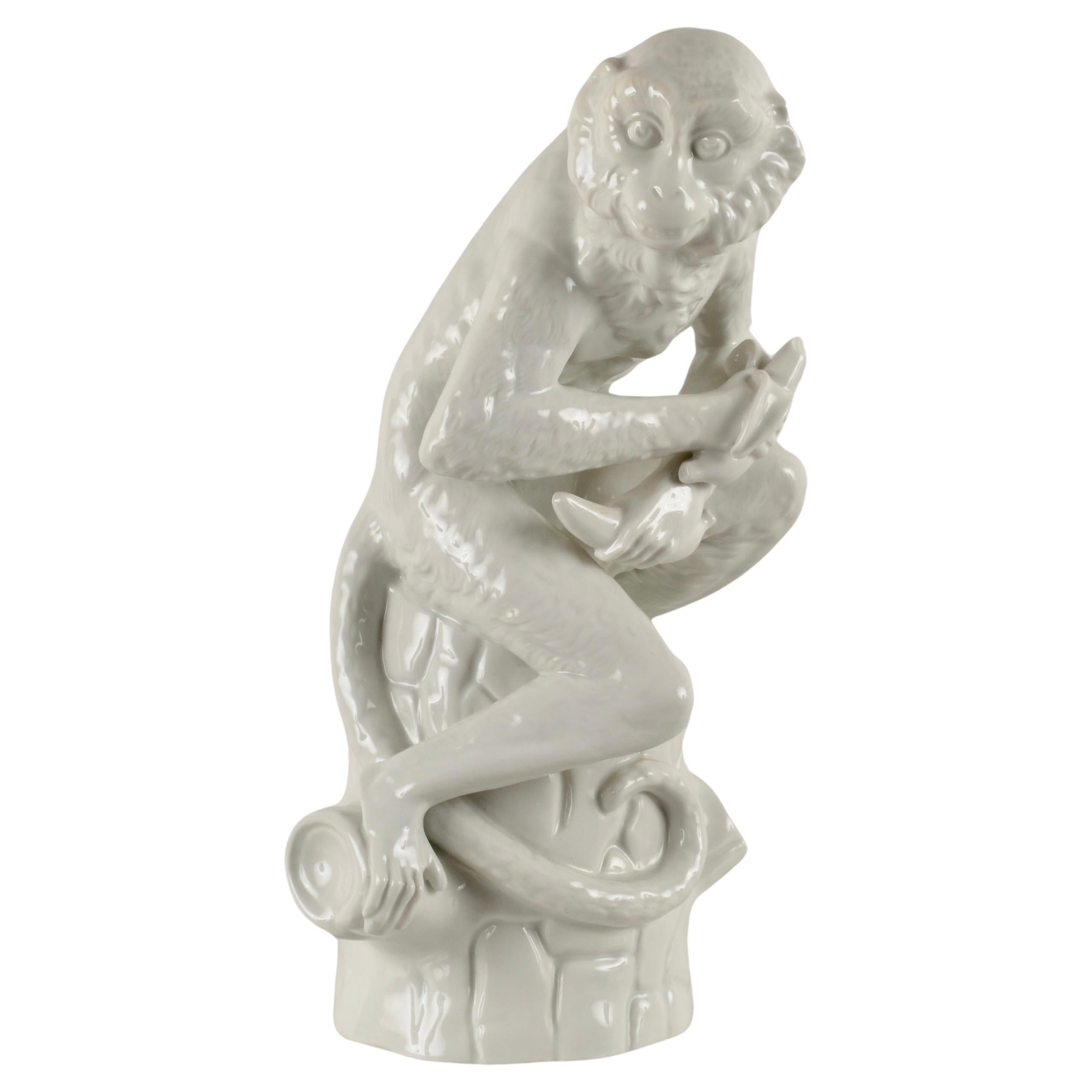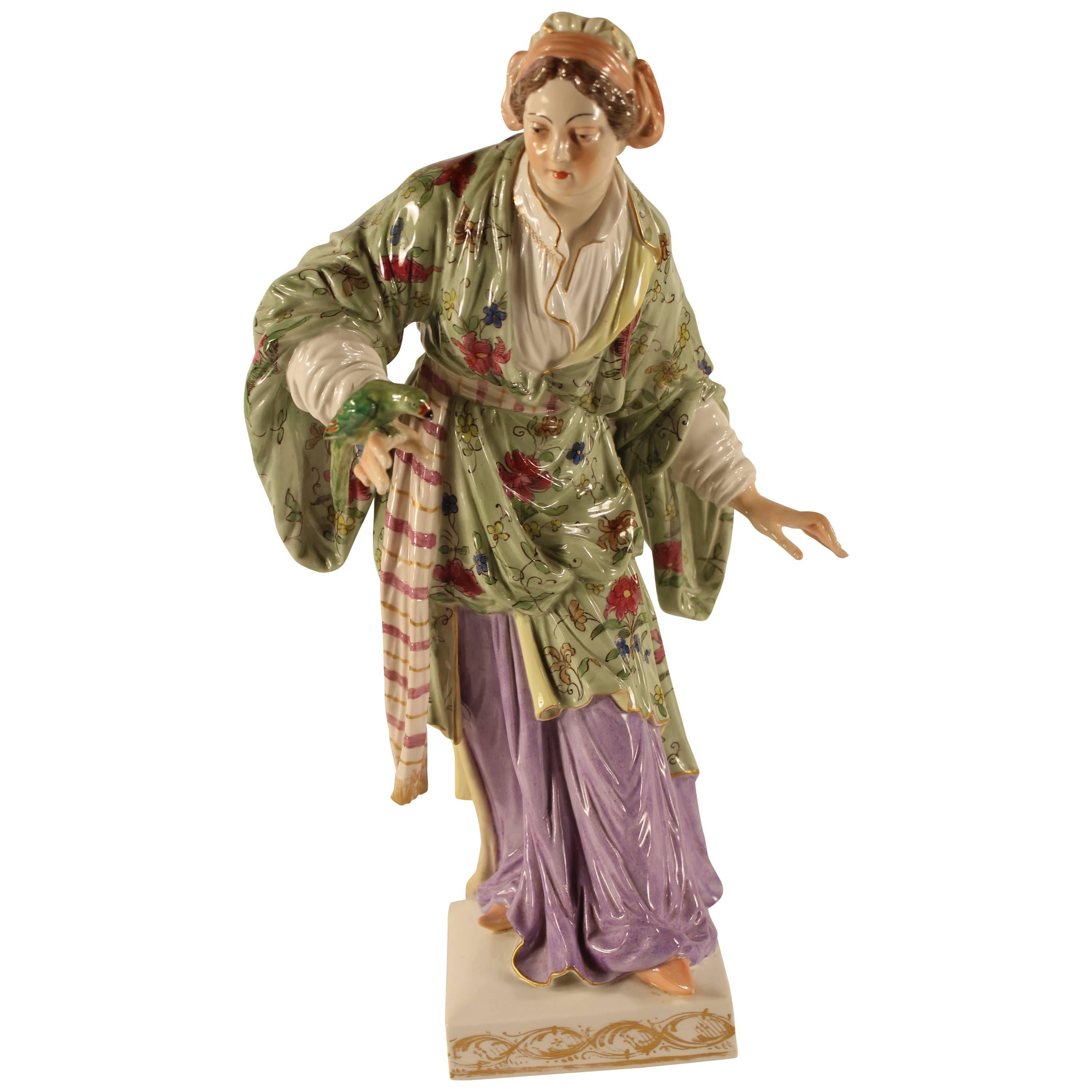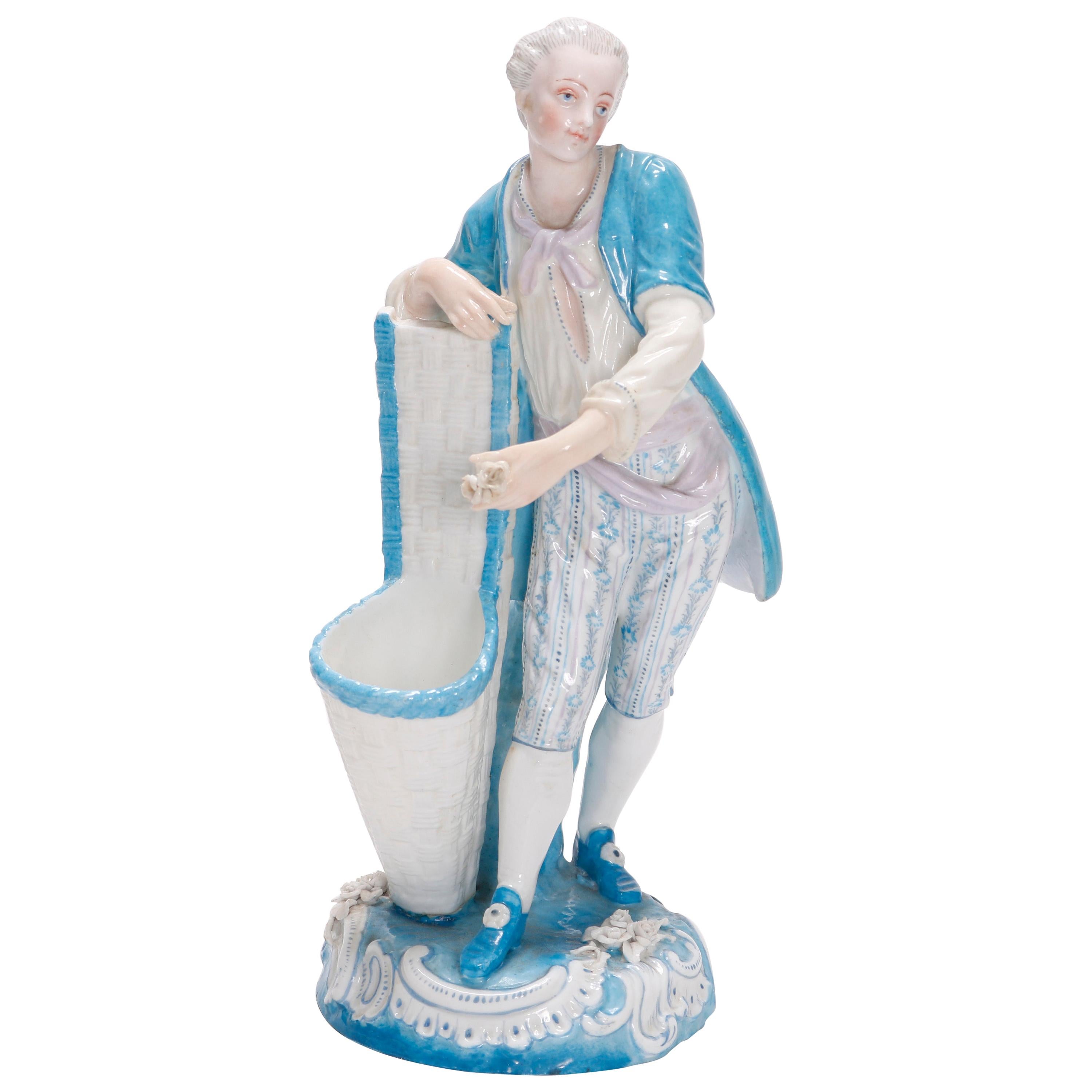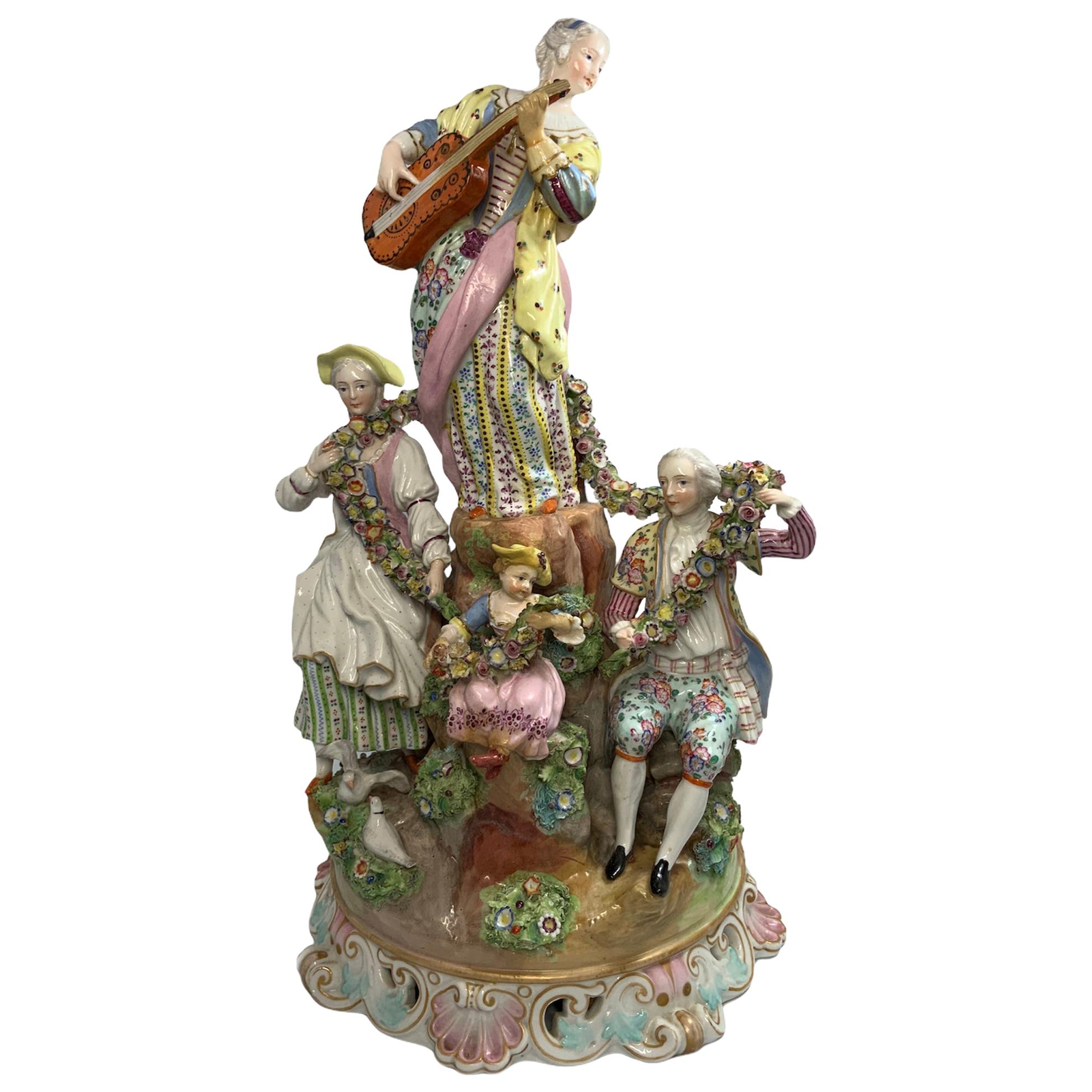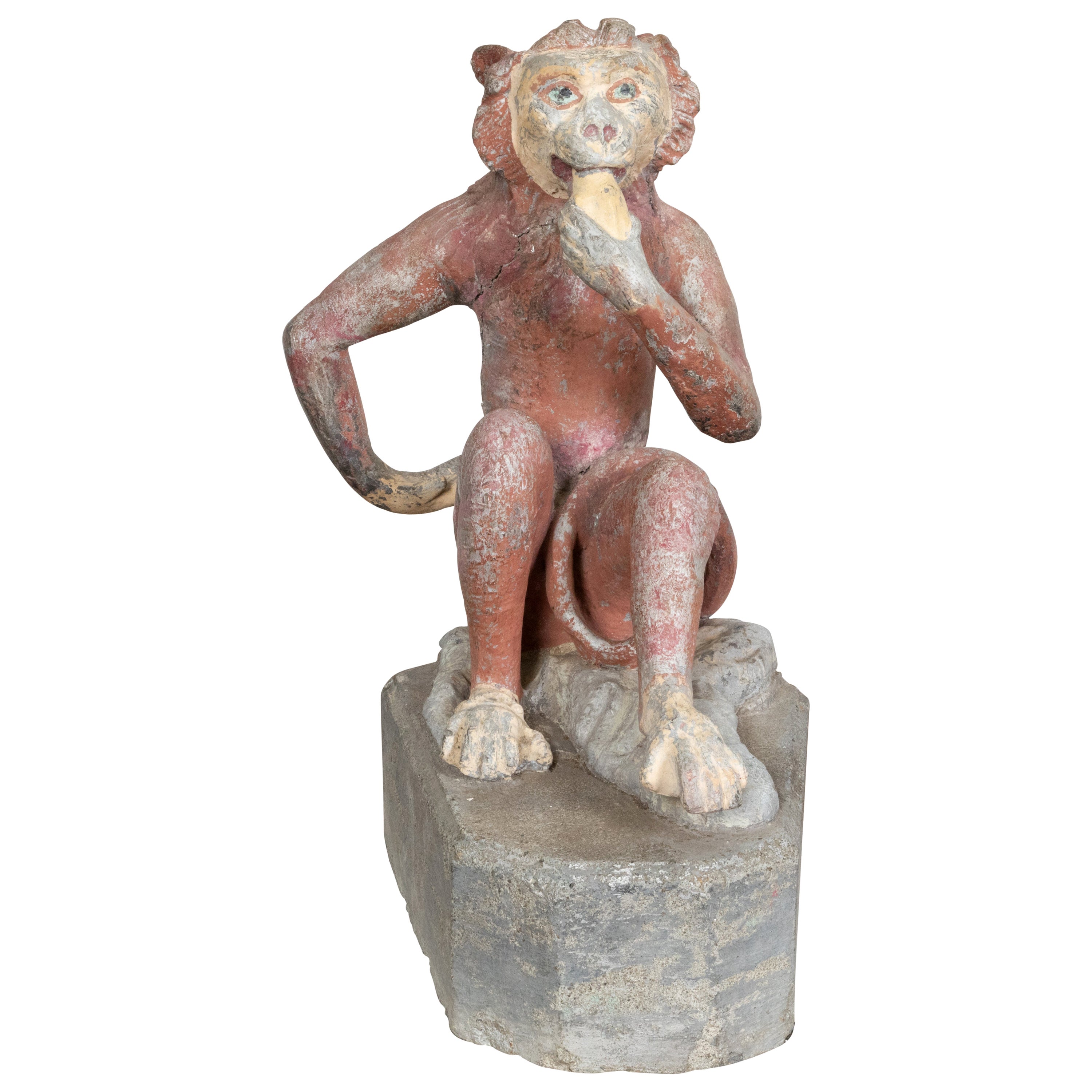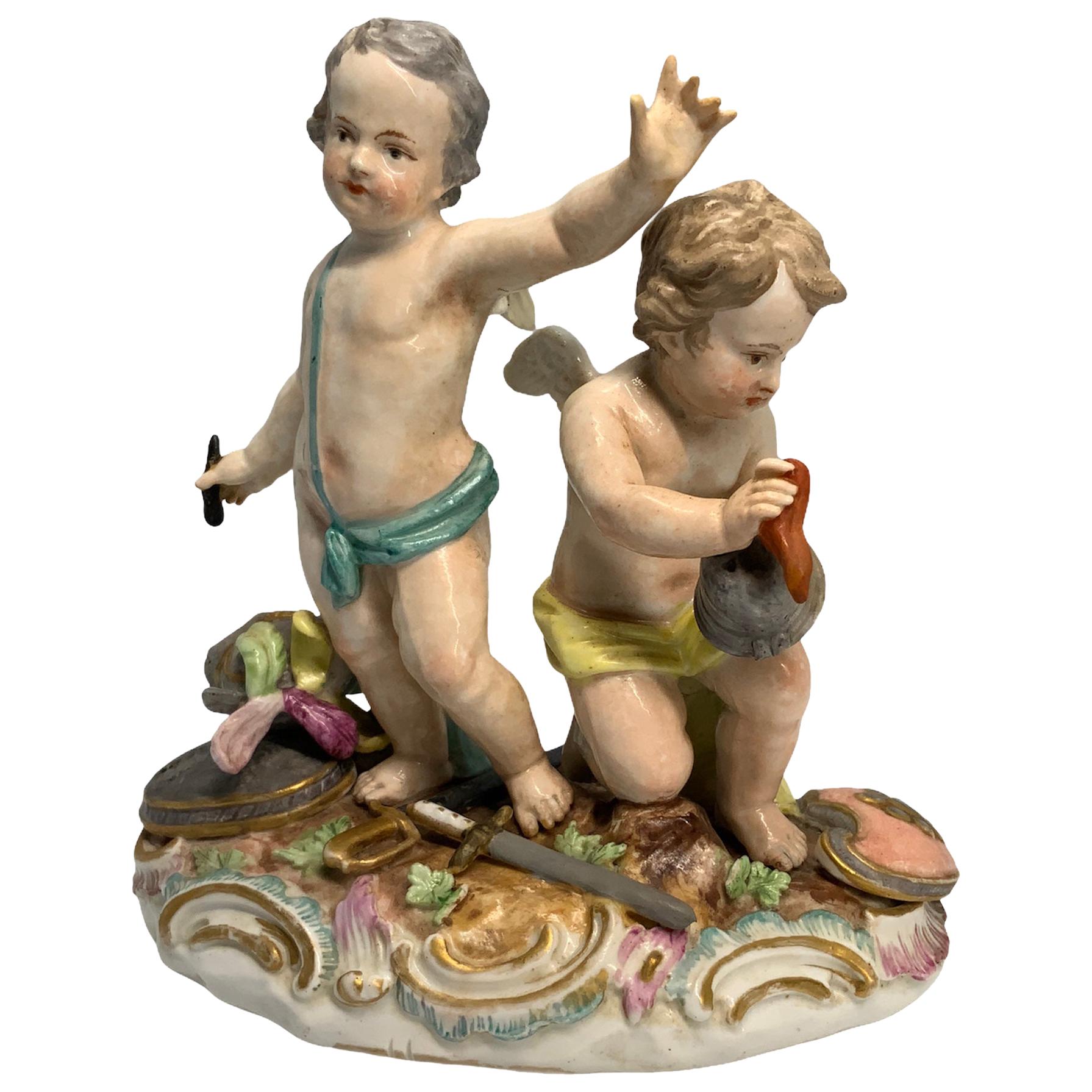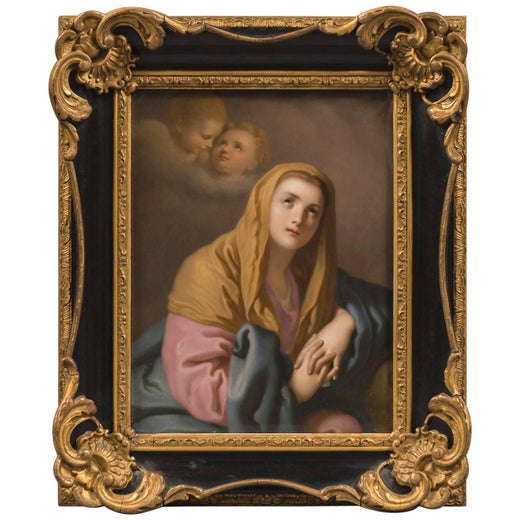KPM Germany 1950 Seated Monkey Eating A Banana Figure In White Glazed Porcelain
About the Item
- Creator:KPM Porcelain (Maker)
- Dimensions:Height: 15.25 in (38.74 cm)Diameter: 6.5 in (16.51 cm)
- Style:Mid-Century Modern (Of the Period)
- Materials and Techniques:
- Place of Origin:
- Period:
- Date of Manufacture:1950
- Condition:Wear consistent with age and use. The overall condition of this piece is impeccable. Beside the little normal wear, there is no damage to any part. With no nicks or restorations. This piece has been carefully inspected to guarantee the condition and authenticity.
- Seller Location:Miami, FL
- Reference Number:
KPM Porcelain
The Königliche Porzellan-Manufaktur Berlin, or KPM (Royal Porcelain Factory, Berlin, in English) was one of the most influential porcelain factories to emerge in 18th-century Germany, along with Nymphenburg and Meissen. KPM was the third incarnation of a company originally founded in 1751 by Wilhelm Caspar Wegely to take advantage of the burgeoning market for “white gold.” On the verge of bankruptcy, Wegely sold his inventory and tools to Johann Ernst Gotzkowsky, who in 1761 established another porcelain factory, which also failed, and was subsequently taken over by Frederick II of Prussia in 1763. Like Augustus II, Elector of Saxony, the patron of Meissen and a keen collector who described himself as suffering (quite happily) from “porcelain sickness,” Frederick II was proud to refer to himself as KPM’s “best customer.” KPM produces china and figurines to this day, and throughout its long history, it has been a style-setter for elegant tableware, particularly in the 1930’s, the period during which their popular patterns Urbino, Urania and Arkadia were designed.
Thanks to its royal patronage, KPM had the resources and contacts necessary to establish itself as a leading luxury producer, and supplied Russian and European elites with tableware in the Rococo and Neoclassical styles, as well as monumental vases, and decorative plaques. Many of these objects can be found today in major museums as a result of Frederick II’s penchant for sending KPM porcelain as diplomatic gifts throughout Europe. Unlike Meissen, which was known for crafting porcelain sculptures of dazzling complexity, KPM is revered for the precision and splendor of its surface decoration, and for its porcelain plaques depicting scenes from history and mythology. One especially lovely example circa 1790 is a neocalssical-style tea service decorated with gold accents and a grisaille design of figures from the ancient world. By contrast, this boldly colorful narrative cup and saucer set from the 1840’s depicts scenes from real life as colorfully as a painting. The set was commissioned by a gentleman for his wife as a tongue-in-cheek gift commemorating her misadventures while in town for a visit to the opera, which resulted in her opera glasses being stolen. The saucer shows the thief and the glasses, and the cup reveals the scene of the crime in vivid hues.
KPM was forced to move from its original location in 1867 due to the building of the new Prussian Parliament building, and this afforded the company the opportunity to to create a new factory with the newest equipment and materials of the day. With the growing popularity of Art Nouveau and the western fascination with Asian ceramics, KPM began formulating glazes that evoked the color palette and rich surfaces of Chinese porcelain. By the turn of the century, KPM was exhibiting its wares to a global audience at international expositions. At the end of World War I with the collapse of the Prussian monarchy, KPM was renamed the State Porcelain Manufactory Berlin, continuing to use the name KPM and its use of the cobalt blue sceptre mark that is painted on the bottom of every piece.
By the late 1920’s, the designers and craftsmen of KPM were inspired by the tenets of Modernism, particularly the styles of the Bauhaus and the Deutscher Werkbund. During this period, the firm’s aim was to produce useful household porcelain for a range of consumers, rather than catering to a small elite. Among the most successful patterns of this era was designer Trude Petri’s Urbino line, which is still produced today. Following World War II, KPM was temporarily housed in the town of Selb, and only returned to its rebuilt quarters in Berlin in 1957. In the 1980s, KPM became an private company independent of the state, and began to focus production on the preservation of historic forms, designs, and techniques. KPM continues to collaborate with designers from all over the world, most recently on the Berlin dinnerware service with designer Enzo Mari, and a collaboration with the luxury brands Bottega Veneta and Bugatti.
- ShippingRetrieving quote...Ships From: Miami, FL
- Return PolicyA return for this item may be initiated within 1 day of delivery.
- Germany Hutschenreuther 1930 by Karl Tutter Art Deco Sun Child Women PorcelainBy Hutschenreuther, Karl TutterLocated in Miami, FLArt Deco 1930 porcelain figure by Karl Tutter (1883-1969) for Hutschenreuther. This piece has been created in Bavaria, Germany back in the 1930. This was designed by the artist Karl Tutter-one of the premiere porcelain modelers of his day!-and made by the Lorenz Hutschenreuther depicting a naked women, with the arms open in direction to the sun, this pose called Sun Child. The main body is decorated with delicate skin cream color, with accents of black, red and light gilding. all mounted in a ball on a round pedestal base. This piece have a height measure of 12.75 inches (32.40 Cm) and the base have a diameter of 3 inches (7.6 Cm). Signed at the base, with the company maker's logo for "HUTSCHENREUTHER GERMANY" and the incised inscription "K TUTTER...Category
Vintage 1930s German Art Deco Figurative Sculptures
MaterialsPorcelain
- Sunbeam Supreme Talbot Rare 1947 Radiator Cover Front In Steel And EnamelLocated in Miami, FLRadiator cover from a 1947 Sunbeam Supreme Talbot. Rare and very decorative piece from the American retro period. This a radiator cover panel from the iconic and popular Sunbeam Sup...Category
Vintage 1940s North American Art Deco Mounted Objects
MaterialsEnamel, Steel, Chrome
- French 1900 Edwardian Faux Tortoise Parasol Handle in 18kt Gold & Carved CitrineLocated in Miami, FLEdwardian parasol handle made in France. Very beautiful and elegant piece, created in Paris France during the Edwardian and Belle Epoque periods, back in the 1900. This fabulous p...Category
Antique Early 1900s French Edwardian Desk Sets
MaterialsQuartz, Gold
- Venini by Emmanuel Babled 2004 Women Torso Tall Vase in Cased Art GlassBy Emmanuel Babled, VeniniLocated in Miami, FLArt glass vase designed by Emmanuel Babled (1967-) for Venini. An extremely rare artistic vase, created in the island of Murano by the sculptor Emmanuel Babled, back in the 2004. This sculptural tall vase is part of a limited edition of only 9 piece made by the Venini company from Venice. It is made in the shape of a sublime woman torso, blown in 3 colors of cased glass and finished with a delicate wheel carving. Technique: Blown art glass, triple cased, etched and carved at the wheel. Measures: 450.85 by 196.85 mm (17.75 by 7.75 Inches) Edition: Number 4 of 9. Signatures: Etched at the bottom, "Venini 2004 4/9 EMM. BABLED". with the original Venini decal label. Emmanuel Babled was born in France in 1967. He studied Industrial Design at Istituto Europeo di Design in Milan, graduating in 1989 and founding his own design studio in 1992. In 2010 Emmanuel Babled Studio moved to Amsterdam after many years in Milan. Since the start, he has developed a wide range of unique pieces and limited editions in self-production and for prestigious manufacturers such as Venini, Baccarat, Rosenthal and Covo. These pieces are part of private and public collections around the world. At the same time he has also designed Industrial products, furniture and lighting. His clients include Baccarat, Rosenthal, Venini, Bulgari, Iittala, Dupont de Nemours, Fontana Arte, Oluce, I&I, Laurent Perrier...Category
21st Century and Contemporary Italian Modern Vases
MaterialsArt Glass, Blown Glass, Murano Glass
- Gilbert Portanier 1950 France Vallauris Abstract Modernist Vase Glazed CeramicBy Gilbert Portanier, VallaurisLocated in Miami, FLDecorative abstract vase designed by Gilbert Portanier (Cannes 1926-). Beautiful piece of art, created during the post war period at the Vallauris factory by the French master ceram...Category
Vintage 1950s French Mid-Century Modern Vases
MaterialsCeramic, Terracotta
- Czech Secessionist Art Nouveau 1920 Tall Vase in Biscuit White PorcelainLocated in Miami, FLSecessionist Art Nouveau porcelain vase. Tall highly decorated porcelain vase, created in Czechoslovakia, circa 1920. This beautiful pieces has been crafted in white porcelain hav...Category
Vintage 1920s Czech Art Nouveau Vases
MaterialsPorcelain
- KPM Blanc de Chine Monkey Sculpture, Germany 1960sBy KPM PorcelainLocated in Norwalk, CTMade by the KPM, Real Porcelain Factory in Berlin, Germany, this beautifully crafted figure features a monkey eating bananas. The attention to detail and fine glaze are outstanding. ...Category
Vintage 1960s German Hollywood Regency Animal Sculptures
MaterialsPorcelain
- Porcelain Figure, KPM Berlin 19th centuryBy KPM PorcelainLocated in Belmont, MAWoman with a parrot, KPM Berlin, 19th century.. Beautiful figurine of a standing woman in oriental dress holding a parrot in her right hand. Naturalistically painted with fired KPM mark...Category
Antique 19th Century German Aesthetic Movement Figurative Sculptures
MaterialsPorcelain
- Antique German KPM Hand Painted & Gilt Porcelain Figural Spill Vase 19th CenturyBy KPM PorcelainLocated in Big Flats, NYAn antique German figural spill vase by KPM offers porcelain construction with figure of man in countryside setting, hand painted with gilt highlights, marked on base as photographed...Category
Antique 19th Century German Figurative Sculptures
MaterialsPorcelain, Paint
- Royal Porcelain Manufactory/State’s Porcelain Manufactory 'KPM' Porcelain GroupBy KPM PorcelainLocated in Guaynabo, PRLarge Rococo porcelain figure group depicting a scene of peasants, a young woman playing a guitar in the top of a rock accompanied by a young c...Category
Antique 18th Century German Rococo Figurative Sculptures
MaterialsPorcelain
- French Midcentury Lead Sculpture of a Monkey Eating a Banana with Aged PatinaLocated in Atlanta, GAA French lead sculpture from the mid 20th century, depicting a monkey eating a banana. Created in France during the midcentury period, this lead sculpture attracts our attention with its anthropomorphic depiction of a monkey eating a banana. Seated on a shaped base, the monkey is eating a banana, his right hand elegantly resting on his hip in a very human manner. Boasting a nicely weathered patina, this midcentury French monkey...Category
Mid-20th Century French Animal Sculptures
MaterialsLead
- Royal Porcelain or State’s Porcelain Manufactory 'KPM' Cherub’s SculptureBy KPM PorcelainLocated in Guaynabo, PRThis rare porcelain group sculpture depicts a pair of winged warriors cherub figurines. They are without their helmet, armor, and swords. One is in a victorious posture and the other...Category
Antique 19th Century German Rococo Figurative Sculptures
MaterialsPorcelain
Recently Viewed
View AllRead More
This Richly Textured Jean Mahie Cuff Was Designed in 1978 But Still Feels On Trend
Imbued with a subtle eroticism, this piece inspired by the aesthetics of ancient civilizations is 22-karat gold at its absolute sexiest.
Hunt for Thrilling Artist-Signed Pieces and Estate Gems at Treasure Fine Jewelry
A former architect, owner Edoardo Grande seeks out pieces with unparalleled workmanship and sculptural appeal.
